1 材料与方法
1.1 餐厨垃圾预处理与发酵
餐厨固体取自学校食堂,经人工去除杂物、除油、粉碎和过滤4个步骤预处理后,放置于4.0 ℃冰箱保存〔12〕。使用总体积为1.3 L、工作体积为1.0 L的半连续式反应器进行餐厨垃圾发酵,反应器运行温度为50 ℃,向发酵罐中投加500 mL预处理后的餐厨垃圾(TS为7%左右)和500 mL接种污泥,混合静置2 d。其中接种污泥来自实验室UASB反应器,底物为1.2 g/L葡萄糖,接种污泥挥发性悬浮物(VSS)质量浓度为7.9 g/L。每隔24 h用5.0 g/L NaHCO3溶液调节pH至6.0左右〔13〕。每隔48 h向发酵罐中投加200 mL餐厨预处理液并排出200 mL发酵上清液。餐厨发酵液储存在4.0 ℃冰箱中,作为后续实验补充碳源使用。定期取发酵液检测成分,发酵液COD为2.40~2.60 g/L,多糖为1.36~1.49 g/L,蛋白质为0.67~0.74 g/L。
1.2 反应器设置与运行
实验设置两组上流式厌氧反应器(UASB),总体积为7.0 L,工作体积为3.5 L,流程如图 1所示。
图1
从合肥市朱砖井污水处理厂的间歇曝气池中取活性污泥作为接种物,活性污泥的总悬浮物(TSS)为24.2 g/L,VSS/TSS=0.4。反应器水力停留时间为48 h,温度为27.0 ℃。反应器进水为人工配制,喹啉质量浓度随反应器运行逐步由50 mg/L增加至200 mg/L;进水硝态氮(NO3--N)质量浓度100 mg/L;参考Yongmei Li等的研究〔14〕,将进水碳氮比(COD/NO3--N)设置为7.0;按补充碳源类型的不同将两组反应器设置为乙酸钠组(A组)和餐厨发酵液组(B组),不同阶段相应减少补充碳源COD以维持进水总COD不变。详见表 1。进水中其他组分参考Xiaomei Zhang等〔15〕的报道。
表1 不同阶段的进水设置
Table 1
| 阶段 | 喹啉/(mg·L-1) | 补充碳源COD/(mg·L-1) | 总COD/(mg·L-1) |
| 阶段一(第1天—第43天) | 50 | 600 | 700 |
| 阶段二(第44天—第56天) | 100 | 450 | 700 |
| 阶段三(第57天—第63天) | 200 | 200 | 700 |
1.3 餐厨发酵液对污泥反硝化活性的影响
取第三阶段结束时两反应器中的污泥进行反硝化活性实验。活性实验在300 mL血清瓶中进行(工作体积为150 mL)。碳氮比参考反应器设置为7.0,乙酸钠和硝酸钠质量浓度分别为270 mg/L和180 mg/L,污泥质量浓度为2.0 g/L。将污泥和底物在血清瓶中混合后,使用氮气吹脱约1~2 min并立即加盖。将血清瓶放置在转速为140 r/min、温度为27 ℃的恒温振荡器中震荡,每组实验设置三个平行样。
1.4 微生物群落分析
污泥微生物群落结构由上海美吉生物医药科技有限公司采用16S rDNA基因高通量测序技术分析。DNA提取使用E.Z.N.A土壤DNA小量提取试剂盒(OMEGA,USA)进行。采用Qubit2.0 DNA检测试剂盒进行DNA精确定量。用引物338F(ACTCCTACG-GGAGGCAGCAG)和806R(GGACTACHVGGGTWT-CTAAT)扩增细菌16S rDNA基因。测试结果序列在Illumina Miseq系统上分析。
1.5 分析方法
2 结果与讨论
2.1 餐厨发酵液强化反硝化脱氮的效能分析
反应器出水NO2--N、NO3--N、TN浓度的变化如图 2所示。
图2
图2
反应器出水NO2--N、NO3--N和TN浓度变化
Fig.2
Changes of the concentrations of NO2--N, NO3--N and TN in the effluent of reactors
启动初期(第1天—第35天),B组启动时间稍长于A组,因为喹啉的生物毒性会使反硝化菌活性降低〔18〕,乙酸钠相较于餐厨发酵液更易被微生物利用。在阶段后期(第35天—第42天),B组出水效果逐渐稳定,A、B组的TN去除率分别为97.5%±1.7%和93.6%±4.5%。在阶段二结束时,B组反应器已经逐渐形成降解发酵液中复杂大分子的微生物体系,此时两组反应器的脱氮效果几乎相同,A、B组的TN去除率分别为99.4%±0.5%和98.2%±0.5%。当阶段三喹啉质量浓度提升至200 mg/L后,两组反应器在运行8 d后处理效果已经稳定。这与先前的研究结果相似,运用餐厨发酵液作为反硝化碳源可使反应器快速启动且长期稳定运行〔19〕。此时,两反应器的处理效果出现了明显差异,A、B组的TN去除率分别为90.9%±3.5%和95.8%±1.5%,相较于阶段二分别下降9%和2%。结果表明高浓度喹啉条件下B组的脱氮能力要比A组更加稳定,这与Yongmei Zhang等〔20〕的结论相同。A组出水有NO2--N残留,质量浓度为(6.3±1.7)mg/L,而B组出水NO2--N含量较低,仅为(0.3±0.1)mg/L。餐厨发酵液作为反硝化底物相较于乙酸钠在NO2--N的反硝化上更具优势,这与H. Kim等的实验结论一致〔13〕。尽管有许多研究报道以乙酸盐为底物的反硝化体系脱氮速率最快,但也有研究发现,餐厨发酵液等复杂碳源具有更高的反硝化潜能〔12, 21〕。
2.2 餐厨发酵液强化有机物去除的研究
反应器出水COD变化如图 3所示。
图3
图3
反应器出水COD变化
Fig.3
Changes of the concentrations of COD in the effluent of reactors
在反应器运行的三个阶段,B组反应器出水COD普遍低于A组反应器。尤其在阶段三,A、B组出水COD分别为(124.4±11.9)mg/L和(91.4±7.77)mg/L,B组出水COD比A组降低约26.5%。经HPLC分析,两组出水中均未检出喹啉,但检出了喹啉降解的中间产物2(1H)-喹啉酮和3,4-二氢-2(1H)-喹啉酮等。B组的有机物去除效果比A组好,这可能是因为餐厨发酵液中的大分子与喹啉产生了协同降解作用。该结果与M. D. Seib等〔6-8〕的分析一致,一些大分子碳源能够促进难降解有机物的降解。还有研究指出,喹啉的降解过程与体系中电子供体数量有关,在进水COD相同时,餐厨发酵液比乙酸钠提供的电子供体更多,这可能是餐厨发酵液比乙酸钠更易协同降解喹啉的机理〔21-22〕。综上所述,在餐厨发酵液的作用下,B组反应器中的喹啉降解更为迅速,使得喹啉的生物毒性对体系的影响大大减小,脱氮效果更好。
2.3 餐厨发酵液对反硝化活性的影响
污泥反硝化实验结果如图 4所示。
图4
在阶段三结束后,取两组反应器中的污泥进行反硝化活性分析。A组污泥的反硝化脱氮速率要略高于B组,分别为115.1 mg/(g·d)和102.9 mg/(g·d)。由此表明,餐厨发酵液作为反硝化碳源也能使反硝化细菌获得较高的代谢活性。由于餐厨发酵液的驯化,B组污泥中蛋白质和多糖大分子降解菌占比更高,而适应了乙酸钠为底物的A组中反硝化菌的占比更高。因此,A组中反硝化菌可以高效利用乙酸钠进行反硝化,而在此实验中B组大分子降解菌无法发挥作用,这可能是B组反硝化脱氮速率略低于A组的原因。
2.4 餐厨发酵液对污泥粒径和电位的影响
2.5 餐厨发酵液对EPS和SMP的影响
图 5为三个阶段污泥的EPS、SMP中蛋白质(PN)和多糖(PS)(以单位VSS计)含量的变化情况。
图5
图5
污泥EPS和SMP中的多糖、蛋白含量变化
Fig.5
Changes of polysaccharide and protein contents in EPS and SMP of sludge
由图 5可以看出,两组污泥的SMP变化趋势相似,从阶段一到阶段三,SMP含量呈总体下降趋势。有研究表明,当受到外界刺激时,微生物会加速分泌SMP来保护细胞。而SMP下降也表示着微生物正逐渐适应喹啉降解环境。B组污泥在三阶段的EPS的PN含量高于A组,最大差值可达7.92 mg/g。相较于A组,B组污泥具有更高EPS含量和更大PN/PS值,这可能是污泥为处理餐厨发酵液中大量大分子有机物而产生的变化。A、B两组EPS中的第三阶段的PN/PS值分别为1.41和1.83,两组污泥的PS含量相差不多,造成差异的主要原因为B组蛋白质含量高于A组。由于蛋白质是由具有强疏水性的氨基酸组成,EPS中蛋白质含量越高,污泥越容易团聚,形成的污泥粒径更大〔26-29〕。此外,EPS通过提供吸附位点促进大分子有机物质的降解,细胞外蛋白可以作为酶参与大分子和颗粒有机物的降解过程〔30〕。同时,微生物生成的EPS可以保护微生物抵抗外界不利环境〔31〕。因此,EPS含量更高的B组在对抗喹啉生物毒性上具有更大的优势。
2.6 污泥中菌群结构的分析
阶段三结束后,从两反应器中分别取污泥样品进行污泥菌群结构分析,在属的水平下,两个反应器内污泥微生物群落结构相似,主要菌属及丰度如表 2所示。添加餐厨发酵液后,Bacteroidetes菌能降解有机物为后续反硝化菌提供碳源〔33-34〕,B组中Bacteroidetes菌属的丰度低于A组。Denitratisoma、Longilinea、Rhodococcus菌是反硝化过程的主要参与者〔35〕,在两组反应器中相对丰度差异不大。Trichococcus菌具备反硝化脱氮能力的同时,对复杂大分子有机物和胞外多糖也具有很强的分解能力〔35〕,B组中Trichococcus菌丰度比A组高4.8%,有助于强化脱氮和有机物的去除效果。结合菌群的Alpha多样性分析,A、B污泥的Chao指数分别为1 566、1 692,B比A高8.05%。由此表明,添加餐厨发酵液会提升污泥中微生物的多样性,有助于应对复杂的反应体系,增强工艺运行的稳定性。
表2 污泥菌群主要菌属及相对丰
Table 2
| 类别 | Bacteroidetes | Denitratisom | Trichococcus | Longilinea | Rhodococcus |
| A(乙酸钠组) | 11.6% | 7.4% | 1.7% | 4.0% | 2.4% |
| B(餐厨发酵液) | 6.5% | 7.7% | 6.5% | 3.0% | 2.3% |
3 结论
本研究证实了餐厨发酵液应用于喹啉降解和反硝化脱氮的技术可行性。添加餐厨发酵液后,NO2--N积累现象明显改善,总氮和COD去除率分别提升了5.4%和5.3%,这可能是因为加入餐厨发酵液加速富集了能够降解喹啉和反硝化脱氮的Trichococcus菌。同时,餐厨发酵液使污泥EPS中的蛋白质含量上升,Zeta电位绝对值降低,污泥更易团聚形成大颗粒,体系稳定性得到加强。因此,采用餐厨发酵液促进喹啉降解同时增强反硝化脱氮是一种很有前景的处理工艺。
参考文献
Biodegradation of pyridine in a completely mixed activated sludge process
[J].DOI:10.1016/j.biortech.2005.05.020 [本文引用: 1]
焦化废水的污染物特征及处理技术的分析
[J].DOI:10.3969/j.issn.1006-1878.2015.03.010 [本文引用: 1]
Bioaugmentation treatment for coking wastewater containing pyridine and quinoline in a sequencing batch reactor
[J].DOI:10.1007/s00253-010-2670-8 [本文引用: 1]
Analysis of denitrifier community in a bioaugmented sequencing batch reactor for the treatment of coking wastewater containing pyridine and quinoline
[J].DOI:10.1007/s00253-011-3139-0 [本文引用: 1]
Evaluation of acid-phase digestion as a pretreatment to enhance co-digestion of source separated organics and municipal sewage sludges
[J].DOI:10.2166/wst.2019.374 [本文引用: 2]
Biogas production from anaerobic co-digestion of food waste with dairy manure in a two-phase digestion system
[J].
Improvement of fruit and vegetable waste anaerobic digestion performance and stability with co-substrates addition
[J].DOI:10.1016/j.jenvman.2008.12.002 [本文引用: 2]
Applying fermentation liquid of food waste as carbon source to a pilot-scale anoxic/oxic-membrane bioreactor for enhancing nitrogen removal: Microbial communities and membrane fouling behaviour
[J].DOI:10.1016/j.biortech.2017.03.186 [本文引用: 1]
Synergistic effects of rice straw and rice bran on enhanced methane production and process stability of anaerobic digestion of food waste
[J].DOI:10.1016/j.biortech.2020.123775 [本文引用: 1]
Effects of co-digestion of cucumber residues to corn stover and pig manure ratio on methane production in solid state anaerobic digestion
[J].DOI:10.1016/j.biortech.2017.11.055 [本文引用: 1]
Continuous fermentation of food waste leachate for the production of volatile fatty acids and potential as a denitrification carbon source
[J].DOI:10.1016/j.biortech.2016.02.063 [本文引用: 2]
Nitrate-dependent biodegradation of quinoline, isoquinoline, and 2-methylquinoline by acclimated activated sludge
[J].
Comparison of bacterial community characteristics between complete and shortcut denitrification systems for quinoline degradation
[J].DOI:10.1007/s00253-016-7949-y [本文引用: 1]
Effects of additional fermented food wastes on nitrogen removal enhancement and sludge characteristics in a sequential batch reactor for wastewater treatment
[J].DOI:10.1007/s11356-016-6447-1 [本文引用: 1]
A microtiter modification of the anthrone-sulfuric acid colorimetric assay for glucose-based carbohydrates
[J].DOI:10.1016/S0003-2697(02)00704-2 [本文引用: 1]
Synergistic degradation on aromatic cyclic organics of coal pyrolysis wastewater by lignite activated coke-active sludge process
[J].DOI:10.1016/j.cej.2019.01.121 [本文引用: 1]
Food waste fermentation for carbon source production and denitrification in sequencing batch reactors
[J].DOI:10.1016/j.jclepro.2019.119934 [本文引用: 1]
Effects of additional fermented food wastes on nitrogen removal enhancement and sludge characteristics in a sequential batch reactor for waste-water treatment
[J].DOI:10.1007/s11356-016-6447-1 [本文引用: 2]
Denitrification potential and rates of complex carbon source from dairy effluents in activated sludge system
[J].DOI:10.1016/j.watres.2006.04.005 [本文引用: 2]
Bioavailable electron donors leached from leaves accelerate biodegradation of pyridine and quinoline
[J].DOI:10.1016/j.scitotenv.2018.11.129 [本文引用: 1]
Nutrients removal performance and sludge properties using anaerobic fermentation slurry from food waste as an external carbon source for wastewater treatment
[J].DOI:10.1016/j.biortech.2018.09.087 [本文引用: 2]
Role of extracellular polymeric substance in determining the high aggregation ability of anammox sludge
[J].DOI:10.1016/j.watres.2015.02.031 [本文引用: 1]
Effect of additional food waste slurry generated by mesophilic acidogenic fermentation on nutrient removal and sludge properties during wastewater treatment
[J].DOI:10.1016/j.biortech.2019.122218 [本文引用: 1]
Chemical description of extracellular polymers: Implication on activated sludge floc structure
[J].
Functional identification behind gravity-separated sludge in high concentration organic coking wastewater: Microbial aggregation, apoptosis-like decay and community
[J].DOI:10.1016/j.watres.2018.11.040
Protein and polysaccharide content of tightly and loosely bound extracellular polymeric substances and the development of a granular activated sludge floc
[J].DOI:10.1016/j.watres.2015.05.014
A unified theory for extracellular polymeric substances, soluble microbial products, and active and inert biomass
[J].DOI:10.1016/S0043-1354(01)00413-4 [本文引用: 1]
Multiple roles of extracellular polymeric substances on resistance of biofilm and detached clusters
[J].
Nano-graphene induced positive effects on methanogenesis in anaerobic digestion
[J].DOI:10.1016/j.biortech.2016.10.058 [本文引用: 1]
Process safety and environmental protection: An optimized solid phase denitrification filter by using activated carbon fibers for secondary effluent treatment
[J].DOI:10.1016/j.psep.2020.06.008
Polymer substrate reshapes the microbial assemblage and metabolic patterns within a biofilm denitrification system
[J].DOI:10.1016/j.cej.2020.124128 [本文引用: 1]
Simultaneous heterotrophic nitrification and aerobic denitrification by bacterium Rhodococcus sp. CPZ24
[J].DOI:10.1016/j.biortech.2012.02.050 [本文引用: 1]
Microbial community succession, species interactions and metabolic pathways of sulfur-based autotrophic denitrification system in organic-limited nitrate wastewater
[J].DOI:10.1016/j.biortech.2020.123826 [本文引用: 2]



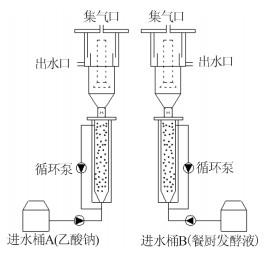
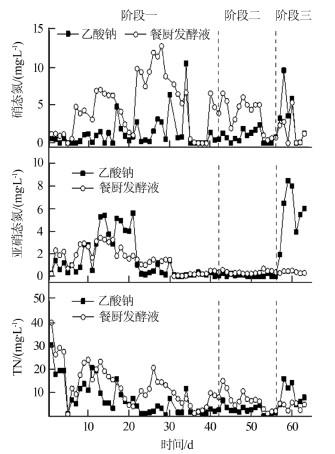
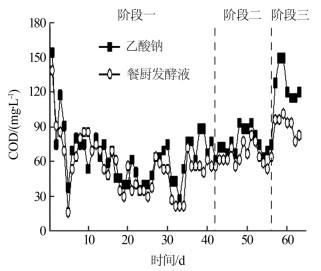
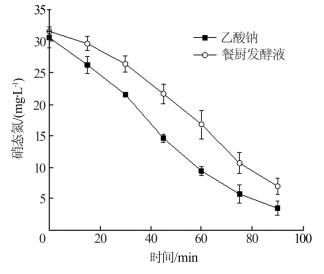
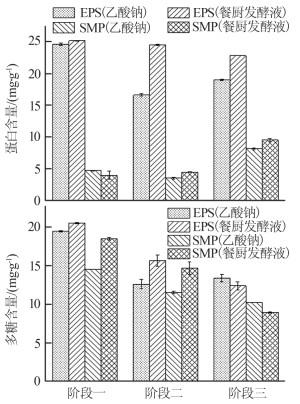


 津公网安备 12010602120337号
津公网安备 12010602120337号